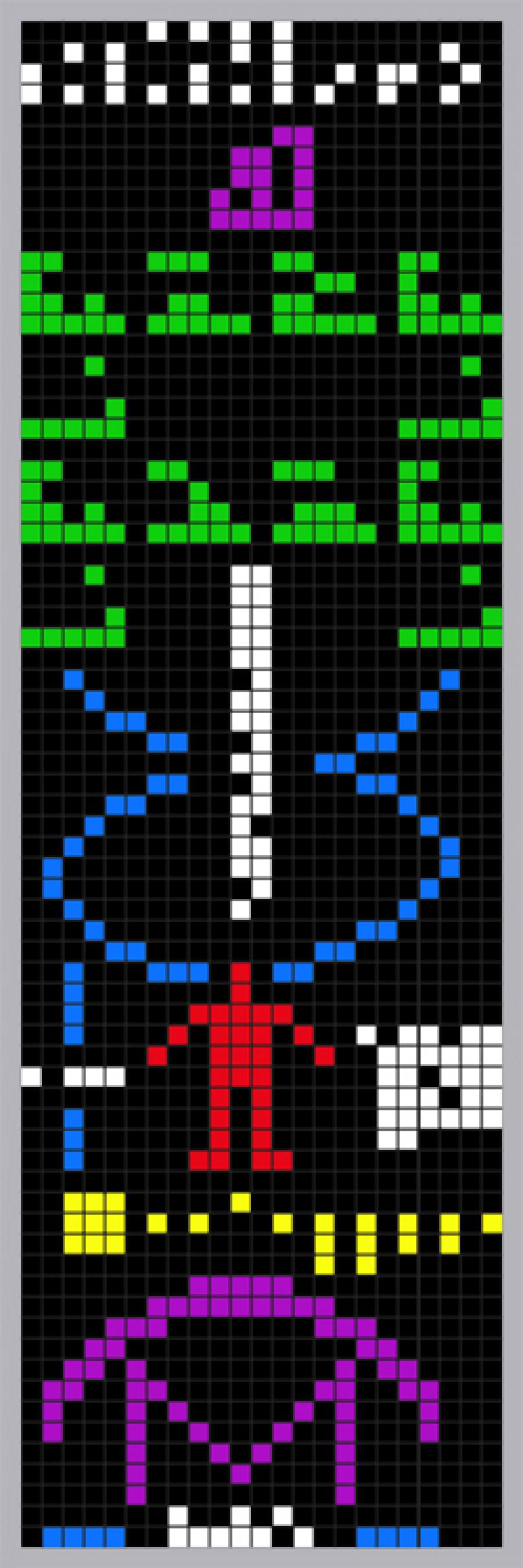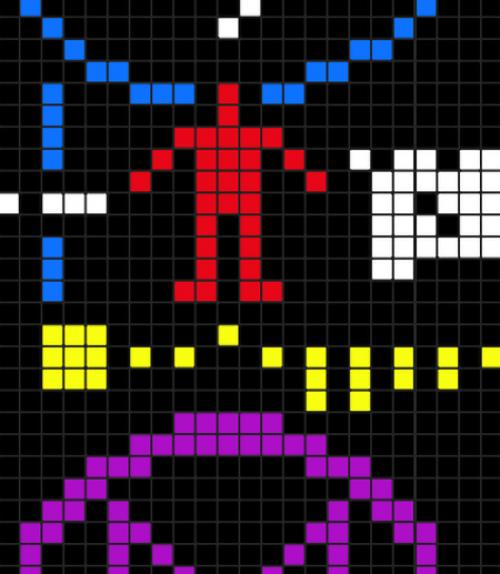Image: This is the Arecibo message with color added to highlight its separate parts. The actual binary transmission carried no color information. Credit: Arne Nordmann
Today’s Google doodle celebrates the 44th anniversary of humankind’s first intentional radio message to extraterrestrials, via the Arecibo Observatory in Puerto Rico, which was then managed by Cornell.
The message was developed by Frank Drake ’51, then professor of astronomy at Cornell, and contributed to by Cornell graduate students and others, including Carl Sagan. It was sent during the dedication of a major upgrade to the Arecibo radio telescope on the afternoon of Nov. 16, 1974. At the ceremony, the radio-frequency message was translated into a warbling audio tone that was broadcast over speakers. When it started, much of the audience spontaneously got up and walked out of the tent and gazed up at the telescope, recalled Harold Craft, who was then director of the Arecibo Observatory.
The message contained some very basic information about the human race. It included representations of the fundamental chemicals of life, the formula for DNA, a crude diagram of our solar system and simple pictures of a human being and the Arecibo telescope."It was a purely symbolic event to show we could do it," said Donald Campbell, professor emeritus of astronomy. He was a research associate at Arecibo when the message was sent and subsequently served as director of the Arecibo Observatory for seven years.
The real purpose of the message was to call attention to the tremendous power of the radar transmitter newly installed at Arecibo and the ability of the telescope's 1,000-foot diameter dish antenna to project a powerful signal into space, according to Craft.
The likelihood that any alien civilization detected the message is small. It was sent only once, over a period of about three minutes, on a narrow beam directed toward a group of about 300,000 stars called the Great Cluster in Hercules, Messier 13. The globular cluster is 25,000 light-years away in our galaxy, the Milky Way. There are stars closer to our solar system than that, but none of them is in the path of the message.
Ironically, the globular cluster at which the signal was aimed won't be there when the message arrives. It will have moved well out of the way in the normal rotation of the galaxy. But "anyone" in the target area when the signal arrives could detect it with a radio telescope of similar size, and it would appear at 10 million times the intensity of the normal radio signals from our sun. From there, the message will continue on its course through outer space, ultimately, millions of years hence, reaching distant galaxies.
A version of this article also ran in the Cornell Chronicle.





